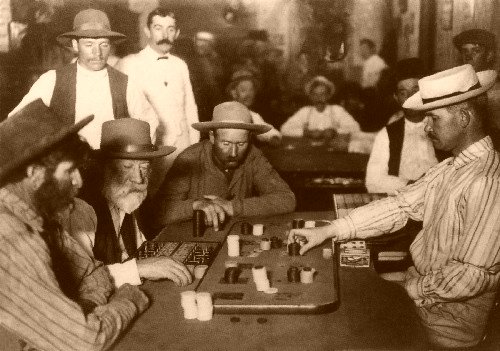Reviving this briefly because I came across an interesting paragraph on Denis Behr's database of conjuring credits while I was researching the Faro Shuffle. The original poster might find this information useful:
"The original purpose of the faro shuffle was to gain an advantage at the game of faro. To understand its usefulness, it helps to understand the game it was used in. A simplified look at faro is to think of it similar to roulette: Players bet on a value of card and hope that it comes up. The croupier deals out two cards: one winner, and one loser. If the player bet on the winning card, he doubles his money; if he bet on the losing card, he loses his bet; if he bet on any other card, he neither wins nor loses. The crucial detail is that if two of the same value come out as the winning and losing cards (e.g., two kings), the dealer takes half of the player's bet on that card. This “doublet” or “split” is the main house advantage, and it's where the faro shuffle is used to unscrupulously stack the odds in the house's favor. By keeping track of specific cards dealt into the winning and losing piles, the dealer will position them at the same positions in their respective halves. When the two packets are perfectly woven together, the pairs will align next to each other. The next time the cards are dealt, there will be more doublets than random chance would provide, making more money for the house. A secondary – and bolder – use of the shuffle was to stack the deck to target players who consistently bet on the same card. The dealer would secretly get all the cards of that value in one half of the deck before weaving the cards together. This would position the cards to always fall in the same pile – the losing pile. For more details on the game of faro, see
The New Pocket Hoyle, 1807, p. 139, Jonathan Harrington Green's
An Exposure of the Arts and Miseries of Gambling, 1843, p. 165, the anonymous
A Grand Exposé of the Science of Gambling, 1860, p. 1 of the 2010 edition, and
The Official World Encyclopedia of Sports and Games, 1979, p. 158."


